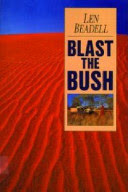Towards the middle of 1946, Beadell was asked if he would waive his discharge from the army for a further twelve months, as a new scientific expedition in the Darwin-Katherine region of the Northern Territory needed a capable surveyor. Beadell wasted no time in accepting the appointment. When that assignment was completed in November, he was asked once more to waive his discharge, as another project was in the making. The British and Australian governments had decided to build a rocket testing range in outback Australia, and Beadell was chosen to locate a suitable site. He accepted the challenge, and began work with a surveying team in the central desert area of South Australia. He chose the site which became known as Woomera in March 1947. Further work was required to select and survey launching pad sites, the centreline of fire for rockets, and the airfield. The site of the future village was also chosen, allowing for approach paths of the runway and natural drainage.[2] His discharge from the Army became effective in December 1948. In November 1949 he was asked to rejoin the project, and began further surveying for the Long Range Weapons Establishment in August 1950. A site for the secret testing of a British atomic bomb was selected by Beadell in 1952, and a road from Mabel Creek to the test site Emu Field was built by him in March 1953, his first road. pp. 212 illusts #1117
Blast the Bush
$20.00
Sold Out
Additional Information
| Author | Lean Beadell |
|---|---|
| Publisher | Weldon |
| Year Published | 1967 |
| Book Condition | FINE |
|---|---|
| Binding Type | Softcover |
